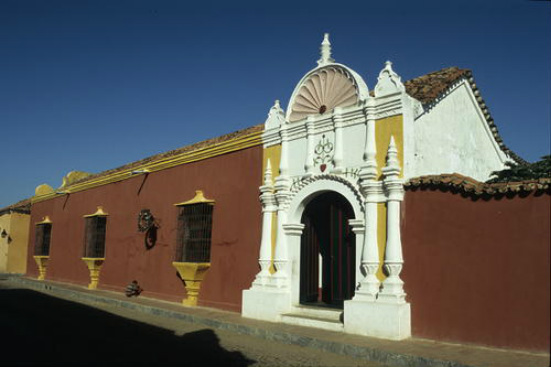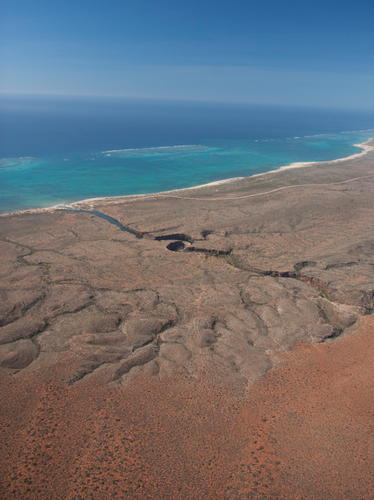There are many important and unique places around the world. Some are of historical or cultural significance, others are unique in their natural beauty, environment, or be home to special plant and animal life. The United Nations Educational, Science and Cultural Organization (UNESCO) created the World Heritage Convention to identify and help preserve these sites.
When a site is identified the 5 goals of UNESCO are to; 1) help collaborate, 2) discovering how tourism and the communities surrounding a site fit together, 3) encouraging the development of programs for individual sites that create a newness of life, 4) focusing on authenticity and quality, and all of this of course is done to 5) preserve and protect the resources of the landmark.
One landmark that was added to the list of world heritage sites is Coro, a coastal city and shipping port in the Caribbean country of Venezuela. Founded in the early 1500s, this city has a rich history of Spanish and Dutch influence. Its Christian heritage runs deep and is present in the plethora of religious architecture and buildings.
Coro and its Ports was originally inscribed to the list of World Heritage Landmarks in 1993 but was upgrade to the list of World Heritage in Danger in 2005. This was due to increased threats from heavy rains in late 2004 through early 2005 and inappropriate construction damaged both integrity and historic authenticity of the landmark.
While the site is known to hold great historic treasures there is a lack of progress by the local governments to develop a goals that will preserve Coro for both short and long term. Other problems include the lack of a buffer zone between the bustling city and the landmark, there still seems to be some confusion as to how the community and tourism can include the landmark without causing damage to the site. When those plans are finalized then it will likely include programs that restore areas and buildings to previous splendor. Doing so will allow some in the community to find profit in greater tourism, and cultural pride. But any progress made has been slow. The city of Coro has a long road ahead until it is able to maintain itself as world heritage landmark; currently Venezuela is considered one of the least friendly countries in the world (http://www.cnn.com/2013/03/14/travel/friendly-countries).
When a site is identified the 5 goals of UNESCO are to; 1) help collaborate, 2) discovering how tourism and the communities surrounding a site fit together, 3) encouraging the development of programs for individual sites that create a newness of life, 4) focusing on authenticity and quality, and all of this of course is done to 5) preserve and protect the resources of the landmark.
One landmark that was added to the list of world heritage sites is Coro, a coastal city and shipping port in the Caribbean country of Venezuela. Founded in the early 1500s, this city has a rich history of Spanish and Dutch influence. Its Christian heritage runs deep and is present in the plethora of religious architecture and buildings.
Coro and its Ports was originally inscribed to the list of World Heritage Landmarks in 1993 but was upgrade to the list of World Heritage in Danger in 2005. This was due to increased threats from heavy rains in late 2004 through early 2005 and inappropriate construction damaged both integrity and historic authenticity of the landmark.
While the site is known to hold great historic treasures there is a lack of progress by the local governments to develop a goals that will preserve Coro for both short and long term. Other problems include the lack of a buffer zone between the bustling city and the landmark, there still seems to be some confusion as to how the community and tourism can include the landmark without causing damage to the site. When those plans are finalized then it will likely include programs that restore areas and buildings to previous splendor. Doing so will allow some in the community to find profit in greater tourism, and cultural pride. But any progress made has been slow. The city of Coro has a long road ahead until it is able to maintain itself as world heritage landmark; currently Venezuela is considered one of the least friendly countries in the world (http://www.cnn.com/2013/03/14/travel/friendly-countries).
| In contrast the Ningaloo Coast in Australia is also a World Heritage site that was officially added in 2011 and has one of the longest near-shore reefs in the world. The marine life is diverse with the whale shark and sea turtles being some of the most famous. Unique to land part is the network of subterranean water bodies, consisting of caves, conduits and streams; supporting a diverse group of rare species. The Ningaloo Coast is a recent addition to the list of world heritage sites, and therefore, still in the early stages of completing the 5 goals. Among the first is the assembly of committee to collaborate development of programs that will help to continue the integration of the community and tourism in the area while preserving the resources and habitat. Tourist companies in the area are already closely monitored and regulated, but offer worthwhile experiences to tourists. Marine and land tourism is unique, Ningaloo reef is in great condition and local tribes have long been preserving the land sections. Although the Ningaloo Coast threats include ocean pollution, off-shore oil drilling, rise in ocean temperature, and over-trafficking from tourism. Steps have already been taken to monitor and preserve this landmark successfully for the future. |



 RSS Feed
RSS Feed